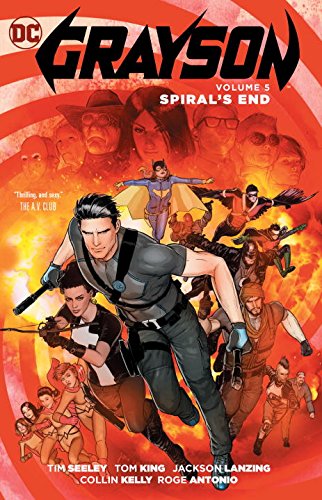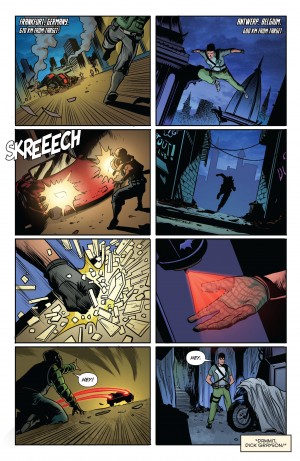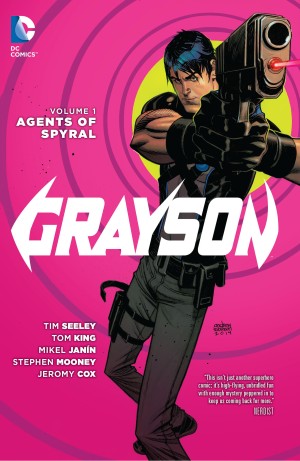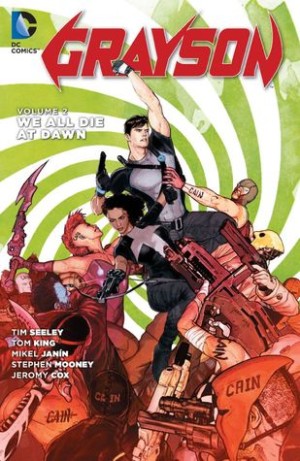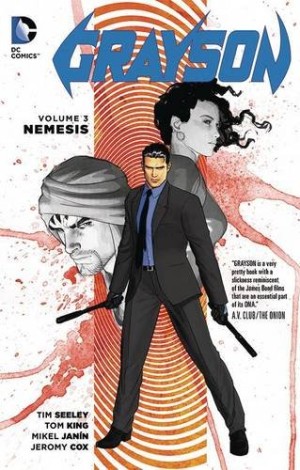Review by Ian Keogh
The patchy previous volume A Ghost in the Tomb ended with a spectacular chapter, the best in the series, as Dick Grayson completed his investigation, learned the truth about Spyral and determined the organisation had to be completely taken down. He set about that with gusto. Sadly, that was not only as good as it got, but it’s a considerable drop off to what’s presented in Spiral’s End.
To begin with, leading with the names of Tom King and Tim Seeley on the cover credits is deliberate misdirection on DC’s part. They may have written the series to date, but only contribute the opening chapter here. It continues their plot of Spyral setting assorted other covert organisations and their representatives against Grayson and his allies, but reads as set-up. Thereafter it’s left to the new writing team of Jackson Lanzing and Collin Kelly to wind up a complex series that’s dealt in misdirection and deception from the start. They manage this, but not in any creditable fashion. This is a book packed with over-stated ‘revelations’ that don’t really surprise, and action sequences that pale in comparison with those from previous books.
Part of that is down to absence of artist Mikel Janín. Carmine Di Giandomenico is adaptable, but doesn’t appear to have been inspired by the opening chapter. Roge Antonio (sample page), who brings the story to a conclusion is a far more conventional artist that we’ve been used to. He tells a story, but not in a memorable manner.
To be fair to this parade of replacement creators, their work isn’t poor, just disappointing and largely without spirit. There is a genuine surprise in the finale, but once sprung we’re back to scenes that any reader could predict. Once the main story is concluded there’s a Grayson annual, and while some of the dialogue doesn’t hit the right note, Lanzing and Kelly presenting their own plots works better. The gist is assorted DC characters meeting Agent 37 with his face- obscuring technology and wondering who he might be. The art is varied, from the nice delicate cartooning of Natasha Altarica to the testosterone of Christian Duce, who peaks early with a fantastic posed action shot.
With the Agent 37 period of Dick Grayson’s life drawn to a close, the collection takes the opportunity to direct readers to the next phase as he resumes the Nightwing identity. It sees the return of Seeley to writing the character and merits the ‘Rebirth’ title. It looks in on friends and allies from the previous run and simultaneously sets up viable plots to come. Yanick Paquette’s pages also have a dynamism absent from the rest of the book.
Matters have come to a poor pass when the most entertaining material by some distance is the single chapter included to promote another series, yet so it is. Grayson began with promise and intrigue and eventually petered out with a whimper. Perhaps an indication of how much DC cared by this point is given by the title, which mis-spell’s the organisation at the heart of the series.
